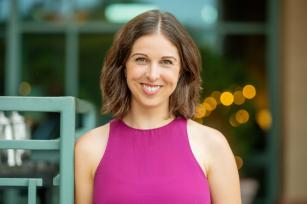
Breadcrumb
- Essential Partners
- Our Stories
- News and Notes
- 4 Lessons That 2017 Taught us About Change
4 Lessons That 2017 Taught us About Change
When we entered into 2017, our country reeled from the election less than two months earlier. People seemed to retreat to their corners and prepare for battle, terrified of or thrilled for what the next year would bring.
As this year progressed, our team often felt like we had front row tickets to this tension: when to engage, and when to fight? As we spoke with people working to shift the dynamics of polarization in their community, we often saw this tension firsthand: yes, we need to have better conversations. But also, their views are repugnant and we must stop them.
How can these two poles come together to create the communities we want to work and live in?
1. Change is hard. (And it requires more than one tool.)
At Essential Partners, we help people in their communities come together and have the conversations they need to have, but seem impossible. Whether it’s helping a college community rethink how they help students feel included on campus, or helping journalists and judges in Finland think intentionally about how they speak about refugees; having those conversations is essential.
But just this past year, we have seen important other tools move toward change: marches, policy change, persuasive writing, and activism. That said, every group working towards change requires communication as a tool to hear voices within the group and communicate goals within and outside that group.
2. Change is especially hard if people don’t want to change how they communicate.
We have all created habits of communication in our communities – we yell, or avoid conflict, or click “reply all” on that email we know we probably shouldn’t. In order for relationships to change, people need to fundamentally change how they communicate. Especially when it’s tempting to revert back to sound bites and debate. After 2017, it’s safe to say we know now what doesn’t work – we know what makes our communities more divided, more polarized. So in order to change that, it is important that people are willing to come together and figure out how to communicate in a way that allows us to wrestle with dilemmas and challenges together, since we all have to live with the outcome.
I continue to go back to the inimitable words of Roxane Gay in 2015, in “The Seduction of Safety, on campus and Beyond.” In her op-ed, she says:
On college campuses, we are having continuing debates about safe spaces. As a teacher, I think carefully about the intellectual space I want to foster in my classroom — a space where debate, dissent and even protest are encouraged. I want to challenge students and be challenged. I don’t want to shape their opinions. I want to shape how they articulate and support those opinions. I do not believe in using trigger warnings because that feels like the unnecessary segregation of students from reality, which is complex and sometimes difficult.
Rather than use trigger warnings, I try to provide students with the context they will need to engage productively in complicated discussions. I consider my classroom a safe space in that students can come as they are, regardless of their identities or sociopolitical affiliations. They can trust that they might become uncomfortable but they won’t be persecuted or judged. They can trust that they will be challenged but they won’t be tormented.
3. Change may be hard, but it is possible.
Change is possible when a critical mass of people working authentically as who they are decide to try a different way a different way to communicate. We’ve heard stories this year from 41 people, who have facilitated 53 groups and reached over 1,000 people.
We’ve heard stories of a woman facilitating an online group about polygamy in her religious community. We’ve heard about people who planned conversations in book groups and birthday parties, Sunday School, and at Google. We’ve heard of people whose sole hope was to encourage their children to ask better questions, or talk to their parents in a different way.
And in this space, when people engage differently in their pockets of the world, we can start to see actual change in communities. Here’s some of the feedback we’ve received from our trainings:
- “I view and approach the community differently. The community has changed in my eyes. Especially with the people who come to my events. I hope they look forward to them and give feedback and become more involved.”
- “Three of us from different regions walked away from the workshop with the commitment to continue to have conversations in small groups about what works and what doesn’t work. And now our bosses are talking about getting people from each of the regions to do this as well.”
- “We’re addressing some pretty big issues in the agency. The fact that the people feel safe enough and skilled enough to engage in this issue. The bigger climate of our country hasn’t been there, but we’re doing it.”
4. Change requires changed people.
In our communities today, we can no longer do things the way we have done them. We have to take risks and engage, and trust. It means we have to show up, with the best of intentions, and have a new conversation.
As Brene Brown said, “Courage starts with showing up and letting ourselves be seen.” Certainly, that isn’t all we need. But after this year, we know that the courage to be ourselves and show up for each other in conversation and community can make a difference.
How will you create change this year?
